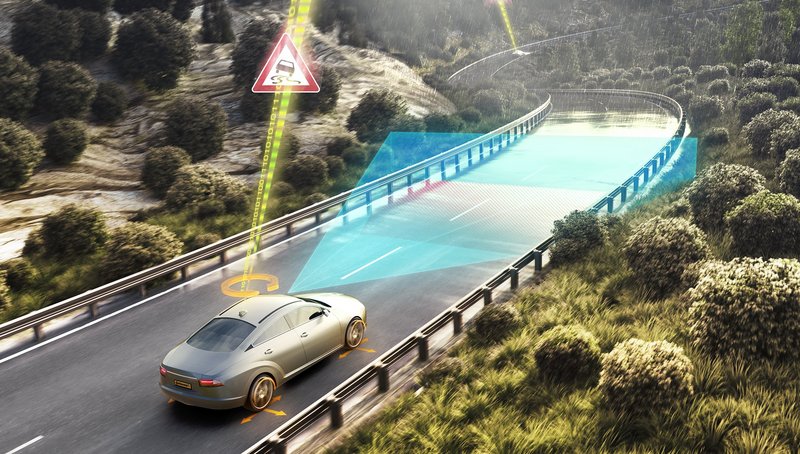Rain, Snow and Ice – Continental Uses Road Condition Detection for Active Driving Safety
- The Road Condition Observer from Continental enables a classification of the road conditions with regard to tire/road friction.
- The system uses in a first application sensors that are installed in the vehicle as standard procedure to classify whether the road surface is dry, wet, covered with snow or icy.
- Thanks to this classification, advanced driver assistance systems such as the triggering time of emergency brake assists can be adapted to suit potential changes in required braking distance due to bad weather conditions.
Frankfurt am Main, April 04, 2017. Wet and icy road conditions frequently cause accidents. Even experienced drivers can misjudge how well the tires grip the road. The international technology company Continental is developing a new solution called Road Condition Observer in response to this threat. A specially developed algorithm detects the typical features for the four different road conditions: dry, wet, snow-covered and icy. Currently, detecting wet conditions is undergoing advanced testing at vehicle manufacturers.
“We use sensors available in the vehicle for the Road Condition Observer to gain information on the grip of the road surface,” says Bernd Hartmann, Head of the Enhanced ADAS (Advanced Driver Assistance Systems) & Tire Interactions project group within the Advanced Engineering department of Continental’s Chassis & Safety division. “This knowledge allows us to adjust the functions of advanced driver assistance systems to the current road conditions. For example, to prevent an impending collision, automatic emergency braking must be initiated considerably earlier on a wet road than on a dry road.”
Currently, it is solely the task of drivers to assess the weather conditions and to combine this with observations of the vehicle’s surroundings, in order to draw the correct conclusions on the condition of the road. In the future, the Road Condition Observer will support the driver, allowing the Advanced Driver Assistance Systems to be capable of detecting adverse conditions and reacting suitably and in good time. Hartmann believes that this capability will become more important in the future: “Automated driving also requires us to make judging the condition of the road technically possible for the system. An automated vehicle in particular must know if it is icy so that it can safely drive around the next corner.”
Knowledge of the Traction Between Tires and Road Influences Active Driving Safety
The automotive industry has been researching for years into methods for detecting the available friction coefficient between tires and the road surface in a proactive way and to use this information to make their vehicles safer. This variable measures the force that a tire can apply to the road and is also known more simply as grip. All earlier attempts in this field have failed due to inadequate sensors and computing capacity that was either lacking or too expensive. After intensive development work, Continental has managed to develop a system that recognizes the road condition and allows a classification of dry, wet, snow-covered and icy road conditions. In addition to the vehicle dynamics sensors in the car, a mono camera is also used. The advantage of this is: Electronic Stability Control (ESC) is available in nearly every car as standard equipment and mono cameras are available in an increasing number of vehicles due to the growing distribution of driver assistance systems.
The Road Condition Observer classifies the road condition based on the evaluation of the surroundings using camera images from the front of the car, comparison with vehicle dynamics data from the ESC, knowledge of local and regional weather data (temperature, wiper activity and cloud data) as well as the tire behavior. In a subsequent step, a friction coefficient can be derived from this. This means that the Road Condition Observer contributes to increasing active driving safety. “Where possible such a system should be implemented with the existing sensors. We have already been able to do this with wet road surface detection,” says Hartmann. “In addition to detecting wet roads, in the next stage there will be a vehicle dynamics model integrated into the ESC control unit that detects low friction coefficient values and can optimize the ESC actions accordingly.”
During further development, the information of the Road Condition Observer will flow into a comprehensive 360° environment model that is prerequisite for a comprehensive understanding of the overall driving scenario. The environment model is generated through the fusion of different information sources. The integration of the road geometry, localization and traffic regulation recognition, model-based tracking of moving objects as well as the identification of free space play an important role. “This creates a comprehensive data basis for safe automated driving across all weather types,” says Hartmann.

Sören Pinkow
Media Spokesperson Autonomous Mobility and Commercial Vehicles
AUMOVIO

